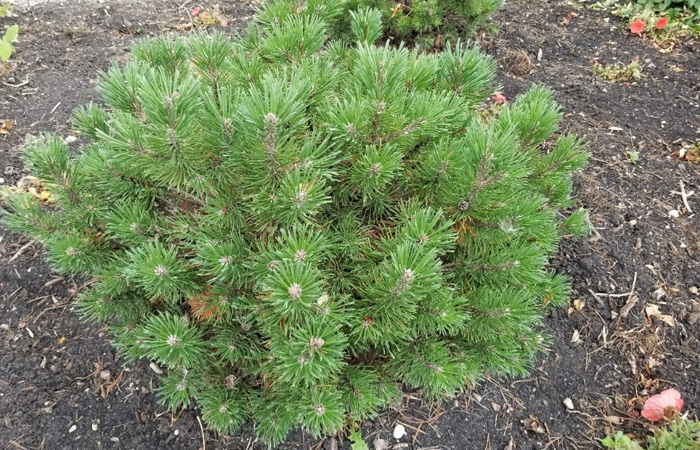Deeply Rooted
Dwarf Mugo Pine

I myself am not a big fan of evergreens. Personally I just am not that impressed. They have slower growth rates and are higher maintenance. I have discerned the care before in previous blogs: winter sunburn, delayed onset of damage, specific water needs. The list goes on. Of course if you do it right the result is a beautiful plant and potential for year round privacy. In my personal opinion the Mugo Pine is the easiest to work with in Manitoba, and still looks good too.
I should really say that Spruce are the easiest to work with. As far as evergreen TREES are concerned it is true, but if you want a BUSH I vote pine. There are four options for evergreen shrubs of manageable size in Manitoba. First are the Junipers which will be either a ground covering carpet or an upright, columnar tree.
Second is Spruce. There are several options here but keep in mind that many of the “dwarf” spruce will continue to grow and gradually become too large is I trimmed. And many of them are not all that cold tolerant, you must be careful which ones you choose.
Thirdly there are cedars. These come in many shapes and sizes to fit all needs. But of course keep in the mind sunburn, watering needs, and potential that not all species are hardy for the prairies.
Then you have pine. An unlikely option I will admit. When you think of lines they are traditionally upright pyramidal trees with thick trunks and long needles. The Mugo Pine, while still having the long needles of course, breaks the trend. Mature size of a Mugo pine is between 5′ and 15′ depending on care and location. It’s form is overwhelmingly global, not upright. While it is typically planted individually or in small groupings, the foliage is compact and dense making it a good option for a hedge as well.
There are several varieties of Mugo Pines, the most popular being the Dwarf Mugo Pine. Maturing between 3′ and 5′ it is far more space efficient than its full sized version. The care and hardiness though remains the same.
The Mugo Pine goes by many names and is native to southeast Europe. It’s natural habitat include mountains with much exposure to dry soil and cold winds. This makes it an excellent candidate for our Manitoba winters, particularly as it’s cold tolerance is a solid zone 2. It will be important to keep them planted in well drained soil as they will not do well with soggy.
I have often found Mugo pine ti be the more sun tolerant counterpart for the globe cedars. While the cedars will do better on the north side in full shade, the Mugo pine prefers the full sun, needing 6 hours or more per day.
With that being said, the Mugo pine still benefits from burlap protecting it from the sun in its first few winters after being planted. It has good sunburn tolerable but nothing is invincible. Make sure ti water regularly through the fall to keep up their strength for winter, like with any other plant or evergreen.
One important step to remember with Mugo Pine is a yearly trim. There is a specific time of year when trimming is most beneficial. Most often in late May or early June when their buds sprout into new growth called “candles”. Once the candles have grown several inches but the needles are still not fully developed you can cut back the tips of the new growth. This will slow its growth rate so make sure not to cut too much. By cutting the tips it will make the pine grow more compact with shorter branches and you can control its form into perfection. I have seen some stunningly uniform Mugo Pines when they are pruned this way. I have also seen some unpruned Pines that ended up resembling some kind of deep sea creatures.
Pruning can be taken to another level as well. I planted a Mugo pine in my yard that was struggling badly. Most of it had turned red and died, but there was still one green branch from the base. After a sever pruning, I planted it had staked it so that the remaining branch was pointing strait up. After a few years I now have a timely, upright Mugo pine that I will be shaping into a little Christmas tree. There are some Mugo Pines that stain such a naturally and, though they are still being tested, I believe they have a lot of merit for the prairies. I have one planted nearby my “edited” dwarf Mugo, and I look forward to seeing how they will compare.




